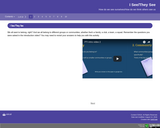
This is an activity for students to create their own I see/they see cartoon similar to what is in the book.
- Subject:
- Arts and Humanities
- Literature
- Material Type:
- Activity/Lab
- Author:
- Lisa Stone
- Date Added:
- 08/24/2018

AEA K-12 E-Curriculum features content developed by AEA Learning Online and partnering Iowa educators for Iowa schools to use in their classrooms. This curated collection focuses on text-based lessons, specifically made with the SoftChalk Cloud platform.

This is an activity for students to create their own I see/they see cartoon similar to what is in the book.
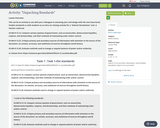
This can be an activity to use with your colleagues in assessing your unit design with the new Iowa Social Studies standards or with students as an intro (or closing) activity for a "Atlantic Revolutions" unit. A teacher could use SS-WH.9-12.14. Compare various systems of government, such as monarchies, democracies/republics, empires, and dictatorships, and their methods of maintaining order and/or control.SS-WH.9-12.23. Critique primary and secondary sources of information with attention to the source of the document, its context, accuracy, and usefulness of sources throughout world historySS-WH.9-12.20. Evaluate methods used to change or expand systems of power and/or authority.or choose from: https://iowacore.gov/sites/default/files/k-12_socialstudies.pdf
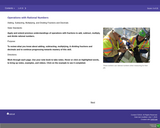
Students learn how to add, subtract, multiply, & divide fractions and decimals.

It is important to understand polynomials and to be able to classify them based on the number of terms, as well as recognize the coefficients, and degrees. You must also understand how to perform mathematical operations on them. This seminar will focus on combining polynomials using addition and subtraction. It will be important to understand the rules to make sure you are combining only like terms. You will apply techniques you have learned involving exponents and general addition and subtraction rules. You will use the techniques learned in this seminar to verify solutions to various other types of polynomial problems as you move forward. When adding and subtracting polynomials, you will first identify the like terms to combine polynomials to their simplest form.StandardsCC.2.2.HS.D.3Extend the knowledge of arithmetic operations and apply to polynomials.

The lesson is to be used to review the six addition strategies the first grade class has already learned. The strategies are: Add Zero Facts, Count On Facts, Make 10 Facts, Doubles Facts, Add 10 Facts, and Add 9 Facts. It also touches on the equal sign.
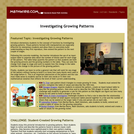
Introduce elementary students to the concept of functions by investigating growing patterns. Visual patterns formed with manipulatives are especially effective for elementary students and allow them to concretely build understanding as they first reproduce, then extend the pattern to the next couple of stages.

In earlier modules, students analyze the process of solving equations and developing fluency in writing, interpreting, and translating between various forms of linear equations (Module 1) and linear and exponential functions (Module 3). These experiences combined with modeling with data (Module 2), set the stage for Module 4. Here students continue to interpret expressions, create equations, rewrite equations and functions in different but equivalent forms, and graph and interpret functions, but this time using polynomial functions, and more specifically quadratic functions, as well as square root and cube root functions.
Find the rest of the EngageNY Mathematics resources at https://archive.org/details/engageny-mathematics.
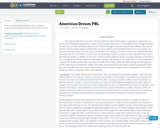
Project to help students develop a more complete understanding of what the American Dream is to them.
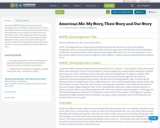
Created by NHPRC Teacher Participant/Creator Kenneth Porter for his Senior Leadership class. We all have different stories, reasons and various paths that we personally took or our relatives traversed to arrive at this nation of ours. This assignment tasks the student with researching the story of a relative/guardian who emigrated to this country. The student will learn the when, the what, the why and the how behind their story, in order to reveal to the student more about their own story.

This lesson explores authors craft and sturcture through and event that directly effects students.

This lesson guides students through analysis of non-print media as a vehicle for argument.
Added to this are Pulitzer Prize Winning Photographs for them to pick from. It is important to note that the photos contain graphic images.

This lesson guides students through analysis of non-print media as a vehicle for argument.
Added to this are Pulitzer Prize Winning Photographs for them to pick from.
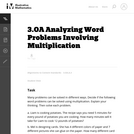
In this task, the students are not asked to find an answer, but are asked to analyze word problems and explain their thinking. In the process, they are faced with varying ways of thinking about multiplication.

These activities are to be used on the first day of class to guage knowledge of the students and collect information about what students are interested in learning during the course.
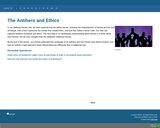
This lesson introduces the antihero archetype and how ethics relates to antiheroes.
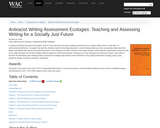
In Antiracist Writing Assessment Ecologies, Asao B. Inoue theorizes classroom writing assessment as a complex system that is "more than" its interconnected elements. To explain how and why antiracist work in the writing classroom is vital to literacy learning, Inoue incorporates ideas about the white racial habitus that informs dominant discourses in the academy and other contexts. Inoue helps teachers understand the unintended racism that often occurs when teachers do not have explicit antiracist agendas in their assessments. Drawing on his own teaching and classroom inquiry, Inoue offers a heuristic for developing and critiquing writing assessment ecologies that explores seven elements of any writing assessment ecology: power, parts, purposes, people, processes, products, and places.

After reading this module, you will be able to:Discuss the strengths and weaknesses of archivall research and case studiesDescribe longitudinal, cross-sectional, and sequential research designs
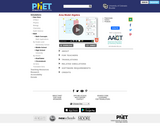
Build rectangles of various sizes and relate multiplication to area. Discover new strategies for multiplying algebraic expressions. Use the game screen to test your multiplication and factoring skills!

This resource is to introduce the writing of a thesis statement and introduction for a research essay.
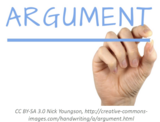
Argument is a familiar concept to most people; however, to win an argument, or at least, to argue points effectively is not so easy. In this seminar, you will learn the basic concepts surrounding argument and, in turn, develop an argument utilizing components that set you up for success. Remember, argument does not mean yelling at someone because you think you’re right; argument refers to logical thinking with clear points, building toward a specific outcome.StandardsCC.1.2.9-10.H: Delineate and evaluate the argument and specific claims in a text, assessing the validity of reasoning and relevance of evidence.CC.1.4.9-10.C: Develop and analyze the topic with relevant, well-chosen, and sufficient facts, extended definitions, concrete details, quotations, or other information and examples appropriate to the audience’s knowledge of the topic; include graphics and multimedia when useful to aiding comprehension.CC.1.4.9-10.G: Write arguments to support claims in an analysis of substantive topics.